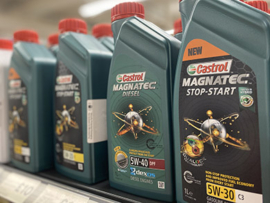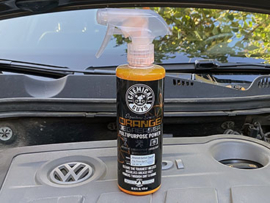Diagnostic Trouble Code P0410 is most commonly associated with vehicles equipped with a secondary air injection system, which is designed to reduce harmful emissions during cold engine starts. The purpose of this system is to introduce fresh air into the exhaust stream to help burn off excess fuel and reduce the production of pollutants.
More about the code
When the Engine Control Module (ECM) or Powertrain Control Module (PCM) detects a malfunction in the secondary air injection system, it triggers the P0410 code and illuminates the “Check Engine” or Malfunction Indicator Lamp (MIL) on the driver’s dashboard. The secondary air injection system typically consists of an air pump, one or more air injection valves, and various hoses and pipes. If any of these components fail or if there is a blockage or leak in the system, it can trigger DTC P0410.
Fixes for OBD-II Code P0410
Specific steps and components involved in fixing P0410 may vary depending on your vehicle’s make and model, but in general assessment and repair cycle involves a series of diagnostic steps to identify the underlying issue and then proceeding with the appropriate repairs. Here’s a general guide on how to address and potentially fix this code:
- Diagnostic Scan. Using OBD-II scanner, retrieve and record the specific codes and freeze frame data associated with P0410. This information can provide valuable insights into the nature of the problem.
- Visual Inspection. Perform a visual inspection of the secondary air injection system components, including the air pump, air injection valves, hoses, pipes, and electrical connectors. Look for any obvious signs of damage, disconnections, loose connections, or corrosion.
- Air Pump Check. Test the secondary air injection pump by activating it while the engine is running. You should hear the pump running, and you should feel airflow from the air injection valves or hoses. If the pump is not working, it may need replacement.
- Air Valves and Hoses. Inspect the air injection valves and hoses for blockages, cracks, or leaks. Sometimes, foreign objects can clog the valves or hoses. Ensure that air flows freely through the system.
- Electrical Connections. Verify that all electrical connections related to the secondary air injection system are secure and free of corrosion. Pay particular attention to the wiring and connectors associated with the air pump and control solenoids.
- Air Bypass Valve. Some vehicles have an air bypass valve that controls the flow of air into the exhaust. Test this valve to ensure it opens and closes properly. Replace it if necessary.
- Vacuum Lines. Inspect vacuum lines connected to control solenoids for leaks or damage. Vacuum leaks can affect the system’s operation.
- Additional Codes. Sometimes, other codes related to the secondary air injection system may provide more specific information about the problem. Check for any additional DTCs.
- Clear Codes. After identifying and addressing the issue, clear the P0410 code and any related codes.
Retest. Run the engine while monitoring the secondary air injection system operation. - Emissions. Depending on your location and local emissions regulations, you may need to pass an emissions test to ensure that the repaired system meets emissions standards.
Consult a mechanic if needed. If you’re unsure about any aspect of diagnosing or repairing the secondary air injection system, it’s advisable to consult a qualified mechanic or technician with advanced diagnostic tools.
How much does it cost to fix the code P0410?
The total average cost to fix P0410 can range from a few hundred dollars to over a thousand dollars, depending on the circumstances. The prices can vary significantly based on several factors, including the make and model of your vehicle, the extent of the issue, and where you have the repairs performed. Here are some cost considerations relevant to the date of publishing:
Diagnostic Fee. This fee a professional technician or mechanic would charge can vary, but typically ranges from $50 to $175 or more.
Parts Replacement. Parts costs (the air pump, air injection valves, hoses, and electrical connectors) can vary widely, but you can expect to pay several hundred dollars for replacement parts, including both OEM and aftermarket options.
Labor Costs. Expect to pay labor costs that range from $100 to $230 per hour or more. The labor time required for the repair will depend.
Emissions Testing. You may need to undergo emissions testing (the price can vary by region).
Can I continue driving with the P0410 code?
You can potentially continue to drive with diagnostic trouble code P0410, but it’s generally advisable to have the issue diagnosed and repaired as soon as possible. Continuing to drive with unresolved emissions-related problem can lead to increased environmental impact and potentially more costly repairs in the long run.
We do an efforts to find, research and recommend the best products. So, we may receive commissions from purchases that you make after following the links in our product reviews.








Leave A Comment